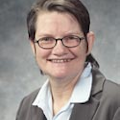BP PLC has five offshore rigs operating in the Gulf of Mexico, which is the same number as it had before the April 2010 deepwater Macondo well blowout, a BP executive told an Apr. 30 breakfast audience at the Offshore Technology Conference in Houston.
By yearend, BP expects to add three more rigs focused on exploration, appraisal, and development, said Bernard Looney, BP executive vice-president, developments.
BP is investing $4 billion in the gulf this year and hopes to invest at least that much every year for the next decade, Looney said.
The Macondo incident prompted a fire and explosion on Transocean Ltd.'s Deepwater Horizon semisubmersible drilling rig and a massive oil spill off Louisiana in the Gulf of Mexico. In the Macondo aftermath, BP pressed ahead with its gulf exploration and development and a reinforced focus on risk management, Looney said.
BP currently has two rigs in operation at Thunder Horse, two at Atlantis, and one at Kaskida. Of the three rigs that BP expects to add to the gulf by yearend, one of those rigs will be equipment brought back to the gulf from West Africa. He described what he sees as the next chapter in deepwater activity.
"The big new play is the Palaeogene or Lower Tertiary. In the Gulf of Mexico, this includes BP's discoveries at Kaskida in 2006 and Tiber in 2009," Looney said. "Each of these fields has accessible hydrocarbons today, but each also has resources that lie beyond our industry's current limit of 15,000 psi and 275° F."
BP is working to increase its offshore exploration and production capabilities. These efforts will include sensing and monitoring systems for real-time subsea integrity management, he said. BP also is working with others to develop subsea values, weighing 20 tons, capable of closing hydrocarbon flow in seconds.
"Making this vision a reality will require unprecedented collaboration across and outside of the industry—involving not only operators, vendors, and contractors but also academics and regulators," Looney said. "This will be necessary to define codes and standards for the design, operation, and reliability of the new technology."
BP also is working to become more transparent so it can earn the trust and confidence of the public and the regulators, he said.
"We need to impose higher standards upon ourselves, share what we learn, work together to attract people with different skills to our industry, and share that story with the world," he said. "As we do this, we will access the deepest areas of the Gulf of Mexico, and the other great basins of the world."
More Oil & Gas Journal Current Issue Articles
More Oil & Gas Journal Archives Issue Articles
View Oil and Gas Articles on PennEnergy.com
About the Author
Paula Dittrick
Senior Staff Writer
Paula Dittrick has covered oil and gas from Houston for more than 20 years. Starting in May 2007, she developed a health, safety, and environment beat for Oil & Gas Journal. Dittrick is familiar with the industry’s financial aspects. She also monitors issues associated with carbon sequestration and renewable energy.
Dittrick joined OGJ in February 2001. Previously, she worked for Dow Jones and United Press International. She began writing about oil and gas as UPI’s West Texas bureau chief during the 1980s. She earned a Bachelor’s of Science degree in journalism from the University of Nebraska in 1974.
